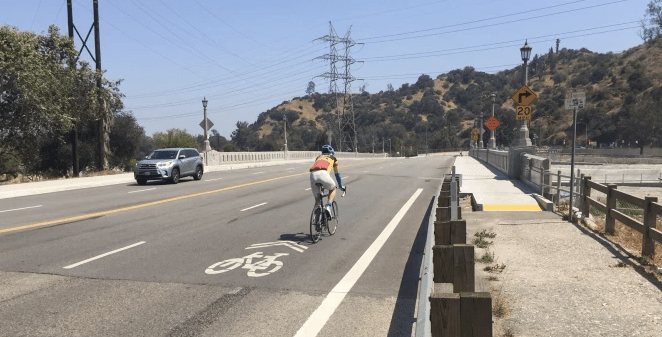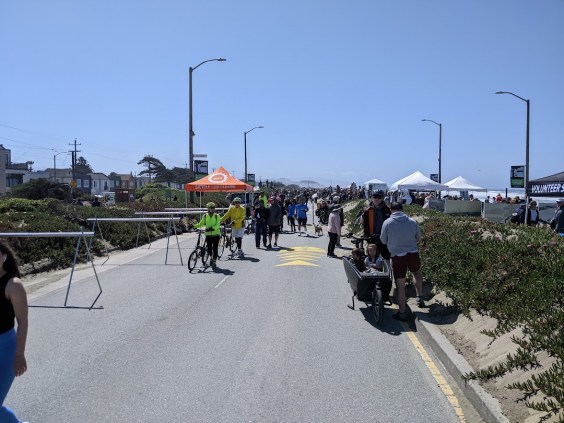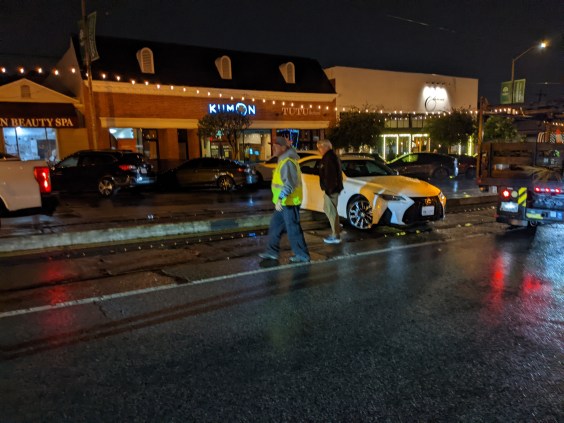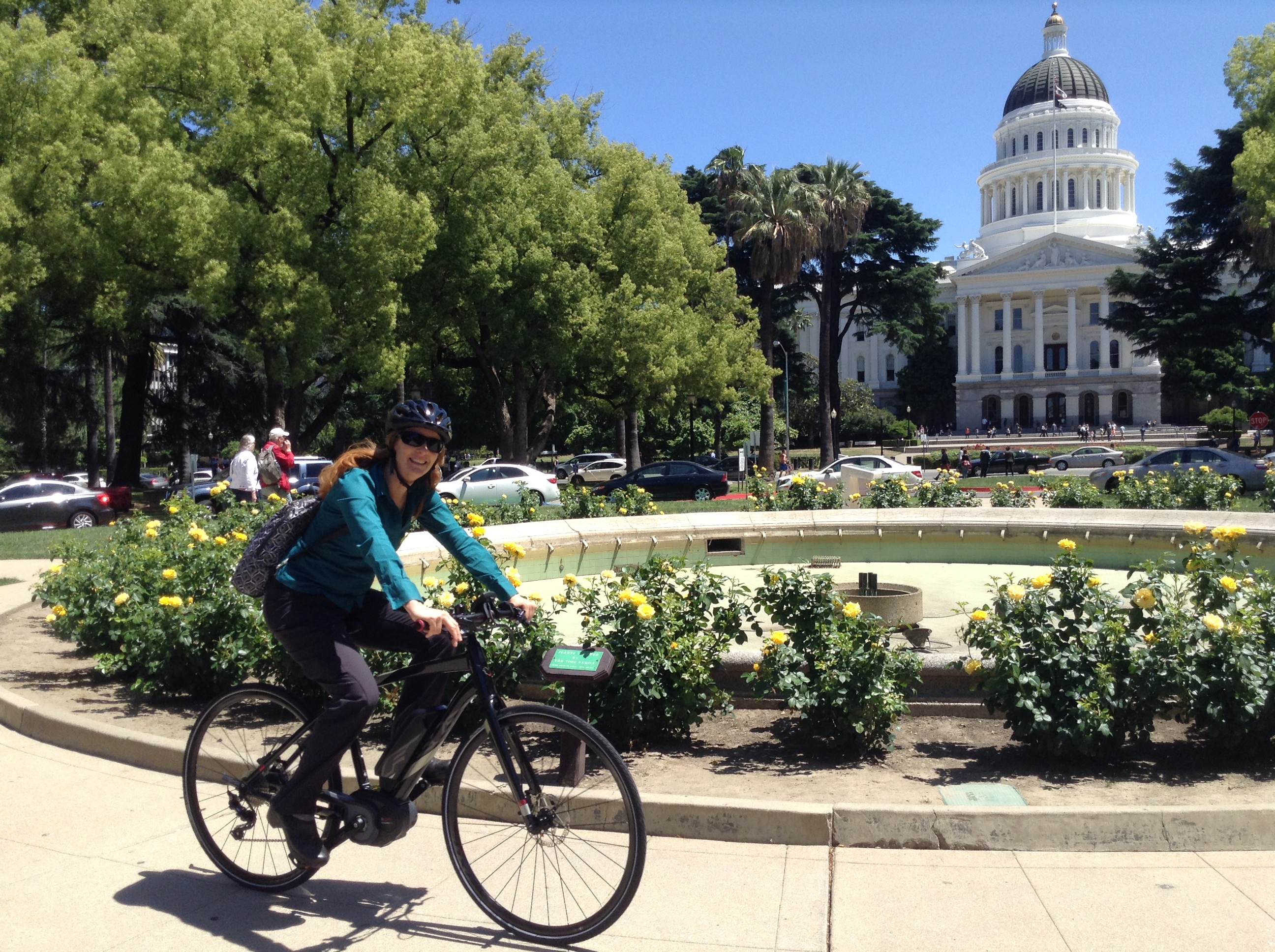Here's a quick end-of-session roundup of bills Streetsblog has been following that have made it into the scrum on Governor Newsom's desk. Will he sign them? He has until September 30.
Safety
S.B. 960 Complete Streets and Transit Priority
Of course our main interest here at Streetsblog California has been in Senator Scott Wiener's Complete Streets bill, which basically puts in statute what Caltrans says it is doing: incorporating bike lanes, sidewalks, crosswalks, and the like when repaving or otherwise maintaining state-owned roads. Governor Newsom vetoed a largely similar bill four years ago; will he sign this one? The circumstances are a bit different; Caltrans has made some progress on its own Complete Streets policy, but its districts still come up with many excuses for not complying with it.
Pushback from Caltrans stalled this bill twice; their amendments were incorporated into S.B. 960, considerably softening it, so perhaps their opposition has softened somewhat. What's different about this bill is its requirement that Caltrans develop a transit priority policy - a potentially momentous change - and it calls for better transparency and quicker processes to make it easier for cities to make changes on their streets where they cross state highways.
S.B. 961 Passive Speed Limit Assist Technology
Also from Senator Wiener, this bill would require all new cars, starting in 2030, to come with some kind of passive speed limit warning system installed. The technology already exists, is required on European cars, and is installed on many new models already. It would not interfere with a driver's ability to speed, if they decide to, but would give a one-time warning that the speed limit had been exceeded (by 10 mph).
Nevertheless, a group of Republican state legislators sent a letter strongly urging Governor Newsom to veto the bill because, first, enforcement is a better way to stop speeders (because it's working so well now) and second, it would place an "undue burden on the majority of responsible drivers." With a beep. Alerting those "responsible drivers" that they are breaking the law. In a way that many drivers say they would actually appreciate, especially when the speed limit may have abruptly changed.
The legislators also object to California setting its own rules for car manufacturers, saying it should be up to the federal government - and that the NHTSA is working towards a similar end. But the NHTSA is working v-e-r-y slowly towards that end, currently "initiating research" on a technology that's been in use for years, and with no rulemaking process in the works at all.
A related bill that also passed, and awaits the governor's decision, is S.B. 1313, from Senator Angelique Ashby. It would make it illegal to use or install devices that defeat or interfere with driver monitoring systems.
S.B. 1297 Speed Cameras in Malibu
This bill from Senator Ben Allen would add the city of Malibu to the existing speed camera pilot program created by last year's A.B. 645 from Assemblymember Laura Friedman. It would allow Malibu to add up to five speed enforcement cameras along Pacific Coast Highway, under similar restrictions imposed on the pilot in other cities. A.B. 645 allowed Los Angeles, San Francisco, Glendale, Oakland, San Jose, and Long Beach to operate speed cameras under a strict program that restricts where the cameras can be deployed, keeps fines low and out of the court system, requires multiple warnings before any tickets are issued, and calls for cities to consider street design changes if the cameras don't lower speeds. So far, San Francisco, Oakland, and San Jose have chosen locations for the cameras, but have not installed any.
S.B. 1216 Limit Use of Sharrows
Senator Catherine Blakespear wanted to limit the use of sharrows and Class III bike routes in part so that Caltrans and cities could no longer claim credit for these as "complete streets." Sharrows are shared-lane markings that tell drivers and cyclists to share the same lane. Class III bike routes are demarcated by signs, but don't have as much as a paint stripe to delineate a lane.
Sharrows and Class III routes have their uses. Berkeley's Bike Boulevards on quiet residential streets are an excellent example. But on all but the quietest of streets it's inappropriate to expect most bike riders to mix it up with car traffic.
After pushback, the bill was so heavily amended that its sponsor, Streets for All, lost interest. The final bill would limit sharrows to roads marked at 30 mph or slower. So Caltrans can still slap a sharrow down on a road where most bike riders would be loathe to share a lane with cars and call it a "bike route."
One good outcome: The bill also prohibits the Active Transportation Program from funding projects that build Class III routes, as of January 2026. It's likely this would have minimal effect - a Class III route is not likely to score very high in the ATP competition.
A different bill contained a similar provision about ATP funding: A.B. 2290 from Assemblymember Laura Friedman, which was held in the Senate Appropriations Committee. That bill also sought to create a quick-build program to get more and faster action throughout the state on building and testing out safer bike infrastructure, but it did not make it past the committee that holds the purse strings.
S.B. 689 Lane Conversions in Coastal Areas
Senator Blakespear also got a bill passed to eliminate the need for a separate, duplicative study under Coastal Commission rules when a city or county wants to convert a vehicle lane to a bike or transit lane.
A.B. 2286 No Autonomous Big Rigs Without a Human Operator Present
Governor Newsom vetoed a similar bill last year, saying it was the DMV's job to regulate autonomous vehicles, but Assemblymember Aguiar-Curry came back and argued hard that this bill was necessary. The DMV is currently drafting regulations on this issue; public comment can be made through October. It's an open question whether Newsom will be convinced this time around.
E-bikes
S.B. 1271 Battery Safety and E-bike Classification
Senator Dave Min's bill would require all e-bikes sold in California to include batteries that are UL or EU certified, or the equivalent, thus largely putting to rest fears of spontaneous battery fires.
The bill also seeks to deal with a problem where an e-bike manufacturer was selling so-called Class 2 e-bikes (which are supposed to be able to go up to 20 mph using a throttle, and 28 mph as long as a rider is pedaling) that include an "off-road mode" allowing riders to go much faster using just the throttle. The bill would make it clear that if an e-bike is "switchable" it is either a Class 3 e-bike, which can go up to 28 mph, or a moped, which can go faster. Either way, it would be illegal for anyone under 18 to operate.
Two other bills started out as attempts to create statewide license and helmet restrictions for e-bike riders, but were quickly amended to focus on local ordinances. A.B. 2234 from Tasha Boerner would allow San Diego to pass an ordinance banning anyone younger than twelve from riding any e-bikes. And A.B. 1778 from Damon Connolly would allow Marin County to pass an ordinance restricting people under 16 from riding a Class 2 e-bike, and/or an ordinance requiring all e-bike riders to wear a helmet.
A.B. 2503: CEQA Exemption for Zero-Emission Trains
Assemblymember Alex Lee got a bill passed that would add zero emission trains to the list of clean transit that gets an exemption under CEQA. This would be more exciting if it didn't refer to hydrogen trains as "zero emission." It's also another case of specifying an exemption instead of actually reforming the California Environmental Quality Act, but no one seems ready to take on that task.
A.B. 3177 No Road Widening for Housing Near Transit
This bill from Assemblymember Wendy Carrillo would prohibit cities from requiring a housing development located near transit to dedicate land for road widening.
S.B. 768 VMT Study
Senator Anna Caballero had floated a bill last year trying to get exemptions from new rules that measure induced travel for rural and suburban areas, saying they were "severely penalized" by having to account for it. It went nowhere, probably because one of the main points of the new rules was to make rural and suburban areas take induced travel into account, something they had never had to do before. She came back this year with a bill that would instead call on the California Air Resources Board to study how the rules are being applied and to analyze the relationships among reducing vehicle miles traveled, reducing greenhouse gas emissions, housing, transportation, economic development, and equity.






